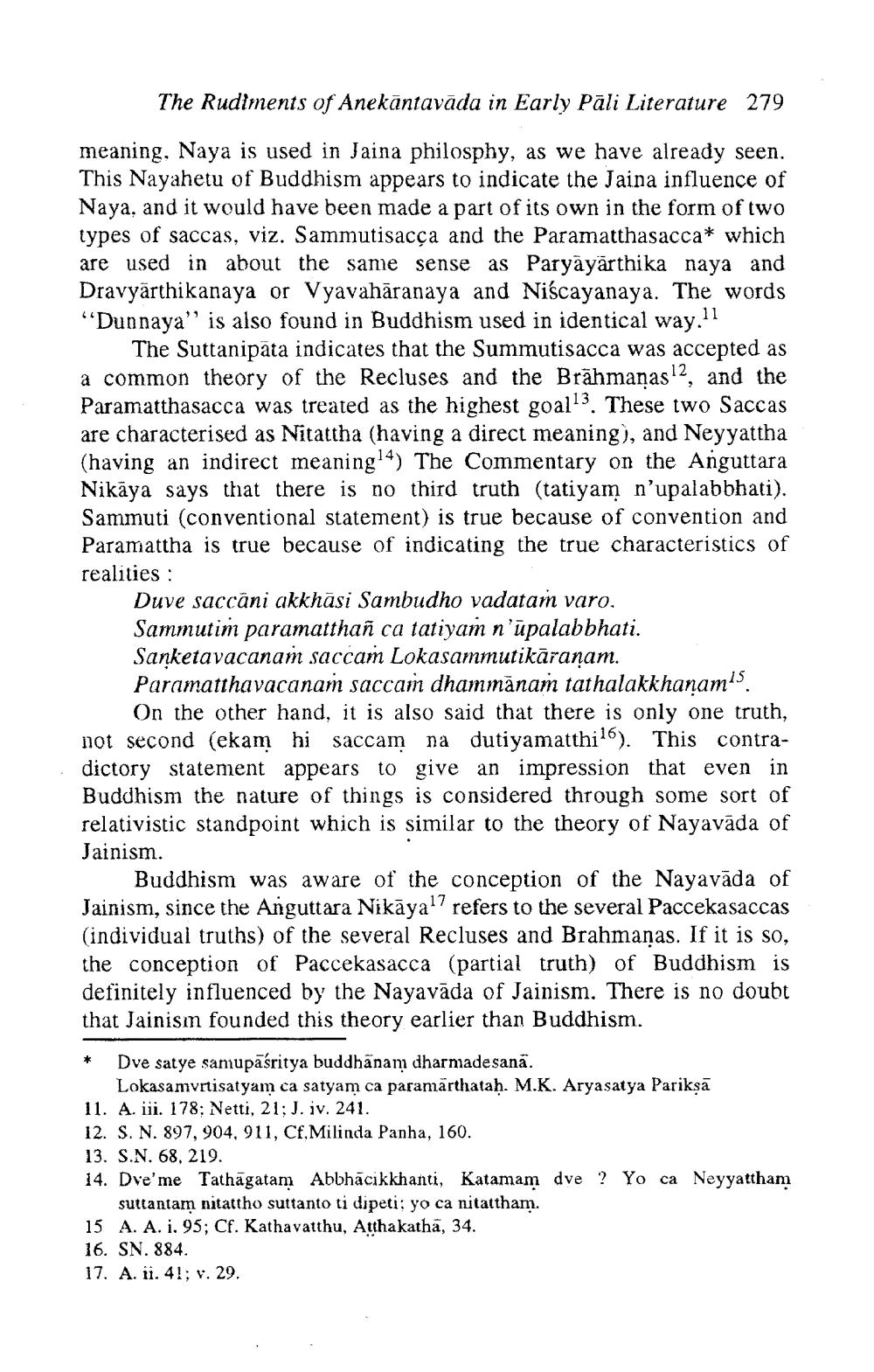________________
The Rudiments of Anekāntavāda in Early Pāli Literature 279
meaning, Naya is used in Jaina philosphy, as we have already seen. This Nayahetu of Buddhism appears to indicate the Jaina influence of Naya, and it would have been made a part of its own in the form of two types of saccas, viz. Sammutisacca and the Paramatthasacca* which are used in about the same sense as Paryäyārthika naya and Dravyārthikanaya or Vyavahāranaya and Niścayanaya. The words "Dunnaya" is also found in Buddhism used in identical way.11
The Suttanipāta indicates that the Summutisacca was accepted as a common theory of the Recluses and the Brāhmaṇas!?, and the Paramatthasacca was treated as the highest goally. These two Saccas are characterised as Nitattha (having a direct meaning), and Neyyattha (having an indirect meaning14) The Commentary on the Anguttara Nikāya says that there is no third truth (tatiyam n'upalabbhati). Sammuti (conventional statement) is true because of convention and Paramattha is true because of indicating the true characteristics of realities :
Duve saccâni akkhāsi Sambudho vadatam varo. Sammutim paramatthañ ca tatiyam n'ūpalabbhati. Sanketavacanam saccam Lokasammutikāranam. Paramatthavacanam saccam dhammānam tathalakkhanam's.
On the other hand, it is also said that there is only one truth, not second (ekam hi saccam na dutiyamatthil). This contradictory statement appears to give an impression that even in Buddhism the nature of things is considered through some sort of relativistic standpoint which is similar to the theory of Nayavāda of Jainism.
Buddhism was aware of the conception of the Nayavāda of Jainism, since the Anguttara Nikāyal7 refers to the several Paccekasaccas (individual truths) of the several Recluses and Brahmanas. If it is so, the conception of Paccekasacca (partial truth) of Buddhism is definitely influenced by the Nayavāda of Jainism. There is no doubt that Jainism founded this theory earlier than Buddhism.
* Dve satye samupāsritya buddhanam dharmadesanā.
Lokasamvrisatyam ca satyam ca paramarthataḥ. M.K. Aryasatya Pariksa 11. A. iii. 178: Netti, 21; J. iv. 241. 12. S. N. 897, 904, 911, Cf, Milinda Panha, 160. 13. S.N. 68, 219. 14. Dve' me Tathāgatam Abbhācikkhanti, Katamam dve ? Yo ca Neyyattham
suttantam nitattho suttanto ti dipeti: yo ca nitattham. 15 A. A. i. 95; Cf. Kathavatthu, Atthakathā, 34. 16. SN. 884. 17. A. i. 41; v. 29.




